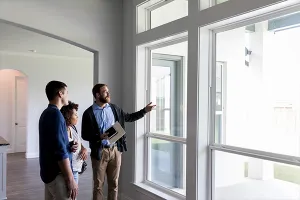It may feel like no other career compares to selling real estate, but professionals in other fields can relate to you.
“There’s a lot of listening and a lot of complaining and errors to fix,” says Linc Thelen, founder of Chicago-based Linc Thelen Design. “It’s a stressful job at the end of the day, and you have to be very communicative.”
Know the feeling? Well, Thelen isn’t a real estate professional; he’s talking about his work as an interior designer. We heard from him and dozens of designers, architects, developers, and others at the Chicago Design Summit this month. In the process, we gleaned three thoughtful ways for you to work better with clients, make properties shine, and help your business rise above the noise.
Helping Clients Declutter
Interior designers have to convince home owners to pare down or update their decor all the time, so they have a few tricks up their sleeves that you can learn from.
Marshall Morgan Erb, an interior designer in Chicago, told attendees every home owner he works with has an existing design element they can’t part with for one reason or another, even though it doesn’t fit their final vision. Erb suggests making modifications to the item, such as upholstery, painting, or staining, or considering giving the item to a family member or friend who would appreciate it. But sometimes, clients just need a little time to change their perspective.
“I like to let other things develop in the project, and then we circle back on the fact that the dining room table doesn’t fit the home they want,” he says. “It takes a while for them to be truthful to themselves… but eventually, they distance themselves from it.”
Taking Magazine-Style Photos
Open any architecture or home design magazine and you’re likely to see at least one photo of a home taken just before sunset. “We all love those dusk photos,” admits Celeste Robbins of Robbins Architecture. It’s not just the glow of the golden hour that draws us in; Celeste Robbins of Robbins Architecture notes that a twilight setting allows a photographer to highlight the interior and the exterior of a home at the same time. A warmly-lit family room appears to glow when framed by the dark blue of dusk from outside. But don’t forget to pick a focal point inside the home that’s visible from the windows (a dining room table centerpiece, perhaps) to capture the eye.
Another way to use windows is to incorporate a home’s natural surroundings in your listing photos. After all, there’s a reason it’s called a “picture window.” Robbins suggests making greenery a part of the staging to create a serene scene on the cheap: “Nature’s always a form of art you never tire of, so if you’re able to bring nature into the house, you’re starting in a good place.”
Responding to DIYers
Just as consumers think they can buy or sell a home on their own using real estate websites, they also think DIY design solutions can replace the knowledge and expertise of a professional designer. The key is to avoid getting defensive. Chicago-based interior designer Michael Del Piero says she embraces Pinterest and other design sites as a place to start building client relationships.
“It shows that you’re not worried and uptight, and it shows that you’re collaborative,” she says, noting that these sites also help emphasize good design as a worthy priority. “All that has helped us because it’s given validity to designing your space. At least it is interesting and important to them.”
Arianne Nardo, the design editor for interior design news source Editor at Large, suggests the proliferation of design websites can also make home owners feel overwhelmed and in need of impartial, professional assistance. “I think it actually means they need you more because they have to go through this endless stream,” she says. “Objectivity is pretty key in design. … It’s tough to decide what’s working and what’s not.”








